Crystals and Life: A Personal Journey
$24.95
Cele Abad-Zapatero (Author)
Edition: First
Book Details:
- Series: Science for Everyone
- Binding: Paperback
- Pages: 280
- Dimensions (in inches): 0.75 x 8.50 x 5.75
- Publisher: International University Line
- Publication Date: November 11, 2002
- ISBN: 0-9720774-0-5
- Price: $24.95
Foreword by M. G. Rossman xi Crystals have been a fascination to all peoples at all times. Crystalline precious stones, such as diamonds, sapphires and rubies, have been the basis of tradition, myths, high finance, exploration and wars since the beginning of recorded history. Nevertheless the systematic study of crystals, a subject known as “crystallography”, is often considered as a boring and dry occupation, pursued by people who have largely lost touch with the affairs of the World. Crystals and Life bridges this gap in a beautiful way. The author, Celerino (‘Cele’) Abad-Zapatero, weaves his own life experiences together with emotions such as crying and dying, biographical sketches of philosophers and scientists, as well as observations about common objects such as sheets of stamps. He includes poems and ballads written by him in which he recalls moments of discovery and other events that have formed him and impacted many others. But this book is by no means an autobiography. It is a textbook that follows almost the same outline as the recently published International Tables for Crystallography, Volume F, produced by the International Union of Crystallography and edited by Edward Arnold and myself. The difference is that Crystals and Life radiates pleasure and fascination of the Universe in which we live, whereas Volume F is mostly stripped of this humanity. The majority of these brief essays were published in professional newsletters of the American Crystallographic Association (ACA), the International Union of Crystallography (IUCr) or the Protein Data Bank (PDB) Quarterly Newsletter under the heading Notes of a Protein Crystallographer. Eventually, it occurred to me that I could make a self-contained unit if I added a few more essays covering the foundations of crystallography in a non-technical manner. These pages, properly revised and illustrated, could communicate the discoveries and wonders of crystallography to a wider and younger audience, as well as that convenient abstraction that we refer to as the “educated layperson.” Crystallography, as a science or as a field of research, has a dreadful reputation. It is always shrouded in a veil of mathematical mystery that apparently only a few can lift to discover its innate beauty. Although the professional crystallographer needs a mathematical background to practice the craft, this does not mean that complex mathematical knowledge is required to understand what crystallographers do. Appreciation and further interest may follow an initial window of understanding into the field.
CRYSTALS AND LIFE
A Personal Journey
Cele Abad-Zapatero
Contents
Preface xiii
Acknowledgements xvii
List of Illustrations xxi
Figures xxi
Color Plates xxii
Part I. BRIEF EVOCATION: CRYSTAL REMINISCENCES 1
Part II. THE BASIC ELEMENTS OF CRYSTALLOGRAPHY 7
1. The Magic of Crystals: What Is a Crystal? 9
2. These Naughty, Naughty X-rays: Properties of X-rays 15
3. Spatial Counterpoint: Real and Reciprocal Lattices 22
4. The Power of Waves: Fourier Analysis of Waves 30
Part III. SYMMETRY AND PROPERTIES of PROTEIN CRYSTALS 37
5. Can Crystals Cry?: Hard and Soft Crystals 39
6. Remembrances of the Alhambra: Symmetry in Space and Time 46
7. Ode to Data: Uniqueness of Crystallographic Data 54
Part IV. FROM DATA TO ELECTRON DENSITY MAPS 61
8. The Gordian Knot of Crystallography: The Phase Problem 63
9. The Combs of the Wind: Unweaving the X-ray Rainbow 68
10. Prof. M. G. Replacement’s Vision: Homage to Prof. M. G. Rossmann 73
11. FRODO, The Electronic Hobbit: Computer Graphics 80
Part V. PROTEIN STRUCTURE, MODEL BUILDING, AND REFINEMENT 89
12. Only Refined Proteins Go to Heaven 91
13. On the Size, Shape, and Texture of Globular Protein Molecules 97
14. The Most Delicate Proteins: Membrane Proteins 103
Part VI. NEW TECHNOLOGIES 113
15. A Brilliant Star in the Midwest Illuminates the Future of Macromolecular Crystallography 115
16. The Lunar Element and Our Collective MADness 124
17. On Gold Rings and Synchrotron Rings 129
18. Cathedrals and Synchrotrons for the 21st Century 133
Part VII. PRACTICAL APPLICATIONS 141
19. Molecular Docking and the Broken Heart 143
20. Itsy, Bitsy Spider 149
21. The Soft Engineers: Protein Engineers 159
22. The Ballad of the 2.8 Å Structure of SBMV: Virus Structure 169
Part VIII. FUTURTE PERSPECTIVES 179
23. The 1.8 Å Structure of Scientific Revolutions 181
24. A Crystal in Time: Biological Clocks 187
25. Conservative and Dissipative: Durable and Ephemeral Structures 192
26. Genomics, Proteomics, and the Essence of Life: A Faustian Dialog 200
27. When I heard the Learn’d Crystallographer 205
EPILOGUE 209
GLOSSARY 215
BIBLIOGRAPHY 231
References 233
Textbooks and Study Guides 253
Basic Chemistry 253
Rocks and Minerals 254
Biochemistry 254
Protein Structure 254
Crystallography and Protein Crystallography 255
Macromolecular Crystallography and Synchrotron Radiation 255
Crystallization of Biological Macromolecules 256
Non-Equilibrium Thermodynamics, Biochemical Oscillations and Biological Complexity 256
World Wide Web Sites of Interest 258
COPYRIGHT CREDITS 261
INDEX 269
Foreword
Cele was born and grew up in Northwest Spain, near the city of Burgos, within the province of the same name. Even today I remember well this town and its large cathedral, as it was here that I first started to fall in love with Audrey, one of the girls in our group of young people traveling together around Spain in the summer of 1953. We both still remember the beauty of the country, but also the extreme poverty of its people. It is clear that Cele’s inspirations for the present book came in part from his memories of Spain mixed with his experiences as a graduate student in Texas, as a post-doctoral fellow in my laboratory, working as a professional crystallographer at Abbott Laboratories, and raising a family in a suburb of Chicago. The variety of Cele’s background and the richness of his English make this book into a unique blend of literature and scientific education.
It has been my privilege to host and work with many pre- and post-doctoral students with vastly different cultural backgrounds during almost forty years at Purdue University in Indiana. We have together enjoyed the pleasures of discovery and agonized over disappointments. Cele’s book is about these emotions and the people who have experienced them.
Michael G. Rossmann
Department of Biological Science
Purdue University
West Lafayette, Indiana
Preface
There was one further motivation. I have read many books of science addressed to the layperson and I have found many of them terribly dry. A sentence-after-sentence recitation or regurgitation of facts, only broken with a few parentheses to mention who obtained the Nobel Prize for what and on which date. Nowadays, the availability of Internet sources has made such an approach to convey the scientific enterprise obsolete. We need to present how rich and multifaceted the scientific endeavor is in a different manner: peripatetic, colloquial, narrative, dramatic, literary and even poetic. Roald Hoffman, Carl Djerassi, Oliver Sacks and others have made major strides along these lines within the domain of chemistry. However, crystallography, hidden behind its mathematical cloak, is still among the orphan sciences in this regard. So far, it seems that it is better to leave it alone.
The fundamental discoveries and the names with the appropriate accolades can be obtained from a myriad of sites in the world wide web. Can we, however, convey the basis of crystallography in a condensed, personal, suggestive, inspirational and poetic form? Although it is a challenge, I think that the answer should be “Yes.” Rachel Carson, the influential author of Silent Spring, wrote in a 1956 article:
“Once the emotions have been aroused-a sense of the beautiful, the excitement of the new and the unknown, a feeling of sympathy, pity, admiration or love—then we wish for knowledge about the object of our emotional response. Once found, it has lasting meaning.”1
She wrote these words in an article about exploring nature with children but all through her books and articles we can sense these emotional reverberations with the world she was describing and explaining to the reader. In our technological world, where all the facts are literally at our fingertips, we have to awaken anew a sense of curiosity, wonder and the interconnection between the sciences and the arts, among children, adolescents and adults alike.
Those are the goals of this collection of vignettes around the general theme of crystals, crystallography and the implications of their scientific findings for the understanding of life processes. Because of my professional expertise, I have focused on the study of crystals from biological samples, and especially proteins. However, enough material is common to many other applications of crystallography that the reader should be able to extend the ideas easily. A limited glossary has been added at the end to provide the definitions of some of the technical terms used throughout the text and there are notes and references for further reading. A brief list of World Wide Web sites of interests has also been added at the end.
On one side, the crystallographic community has failed to communicate the enormous influence that the study of crystals, and the study of matter inside crystals or semi-crystalline materials, has had on our tangible world. On the other hand, the public at large has not realized how the discoveries made in the atomic domain of crystals are affecting their daily lives in areas such as health care or the design of new materials. Moreover, the biomedical sciences stand at the brink of yet another revolution fueled by the influx of information obtained from the unraveling of the gene maps of pathogens and the human genome itself. Mapping the three-dimensional structures of a large portion of the proteins coded by those genes is the next challenge in molecular biology. This knowledge will be followed by therapies based on the understanding, inhibition or alteration of the three-dimensional structures of the proteins associated with those genes. How are those structures unveiled? What is the technology behind those spectacular computer images? What do they mean for the synthesis of novel drugs, or the design of new vaccines? What can we expect in the near future? What are the implications of this wealth of new information for our understanding of life’s physico-chemical processes?
Reading through these pages, the reader should be able to assimilate a series of ideas and concepts related to crystallography. She or he will be able to conceptually understand how crystallography works and how crystallographers are able to unveil the molecular structures existing within crystals. Although painted with coarse strokes, there is enough historical and conceptual background dispersed throughout the text to follow the development of the field and to provide a firm basis for further study. Some essays are also meant to identify and pay homage to some of the heroes of the field who developed the concepts, methods and tools to expedite the structural analysis. A few articles will also illustrate how results obtained from crystals or crystalline materials are affecting our standard of living and quality of life in certain specific areas. Finally a group of essays is devoted to issues that are related to the future of structural biology such as what are the possibilities of this technology, which areas of the field and thriving, and what can we expect in the years ahead.
After a brief personal evocation (Part I), the individual essays are broadly grouped under seven additional Parts (II-VIII): “The Basic Elements of Crystallography” (Chapters 1-4); “Symmetry and Properties of Protein Crystals” (5-7); “From Data to Electron Density Maps” (8-11); “Protein Structure, Model Building, and Refinement” (12-14); “New Technologies” (15-18); “Practical Applications” (19-22); and “Future Perspectives” (23-27).
These personal and scientific sketches can be used as an introductory narrative to complement courses in protein crystallography or structural biology. They can also be used to introduce the fields to non-science majors. However, any person curious about crystallography and its impact on the biomedical sciences and our world at large can also benefit from reading them. They can be read in sequence from beginning to end or at random. Like poems, some essays are easier to read than others, but I encourage you to make an effort to read through all of them. If you already know crystallography, I suggest that you pick and choose first. If you are a novice to the field, you should begin reading Parts II-IV and come back to them as needed. Some of the essays are intended to be read like a poem, in a coffee break; others on a quiet Sunday brunch at home or on the train or bus. All can be read anywhere and everywhere. If I succeed in brightening your day with an “Aha!” of scientific or human understanding, these vignettes will have served their purpose.
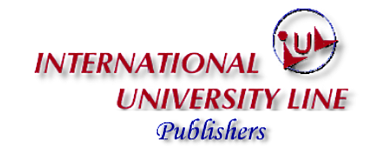
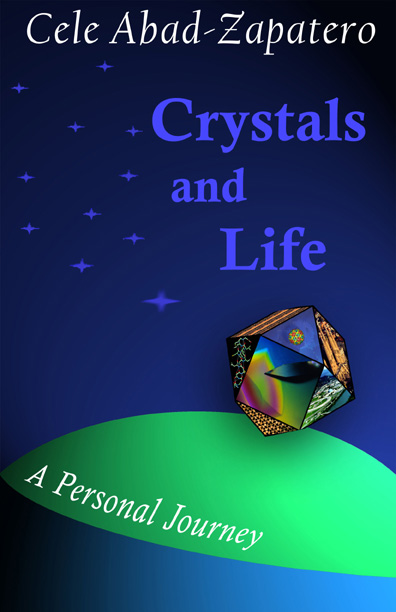
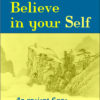
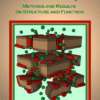
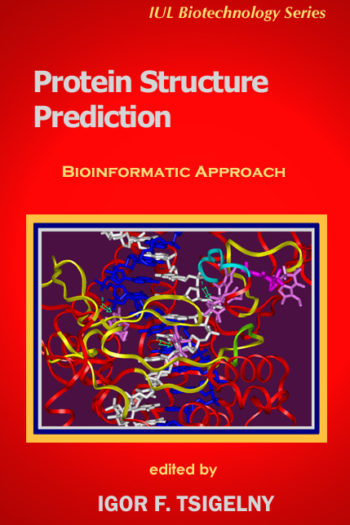

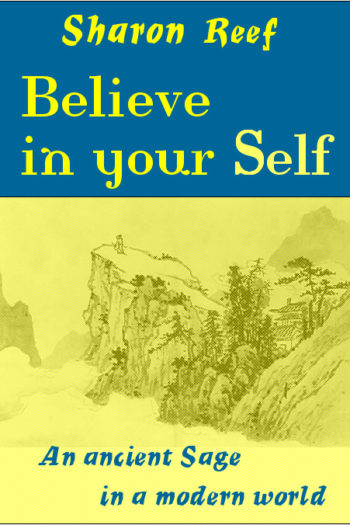
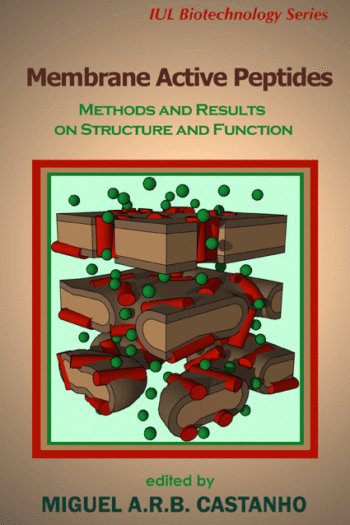
Hans Deisenhofer –
Nobel Laureate in Chemistry
Crystals and Life is a collection of essays on crystals, crystallography, proteins, and science in general that will appeal to both experts and non-experts. Those familiar with the field and immersed in its day-to-day aspects are led to see it from a distinctly different direction. Those unfamiliar are in for a gentle, but always scientifically sound introduction, and will desire to learn more. The author is a prominent protein crystallographer with strong artistic leanings. The way in which he introduces scientific concepts, either with objects from the world of art or with details from the lives of the principal contributors, makes the book itself a work of art…
Wayne A. Hendrickson –
Professor of Columbia University
Cele Abad-Zapatero aspires to communicate the discoveries and wonders of crystallography to the ‘educated layperson’ in a lively, inspirational and even poetic form. He does so in a most remarkable mix of science and the arts, of pure and applied, and of technical and personal. Cele is a romantic and a visionary. His keen observations and fabulous cultural repertoire truly do breathe life into crystals. His colorful book will fascinate anyone interested in nature and discovery.
Alexander McPherson –
Professor, University of California, Irvine
These timely essays contain invaluable insights derived from years of personal experience in the artful application of a rigorous science, and from years of dedication to the communication of those ideas that form its foundation. Students will find welcome relief from the dry approaches that frequently characterize scientific instruction, and professionals in the field will delight in seeing illustrated their common bond with the artistic tradition. The Spanish flavor is exactly right , the rich examples cleverly chosen, and the tone of the essays gentle on the mind. I know others will enjoy reading, and appreciate these essays as much as I have.
Gale Rhodes –
Professor, University of Southern Maine
Scientists not already familiar with crystallography will find descriptions and images that should pique their interest and equip them for more rigorous readings. Nonscientists will find reasons for truly intellectual (as opposed to pseudo-mystical) fascination with crystals, and insights into such matters as the power of symmetry and the incisive but indirect means by which scientists develop models of the molecular world. For all readers, I expect that the real staying power of the essays will lie in the author’s attempts to show that science, art, music, and the everyday are all of one piece, and that the threads that run through them can be pulled together to make a richer and more satisfying world.